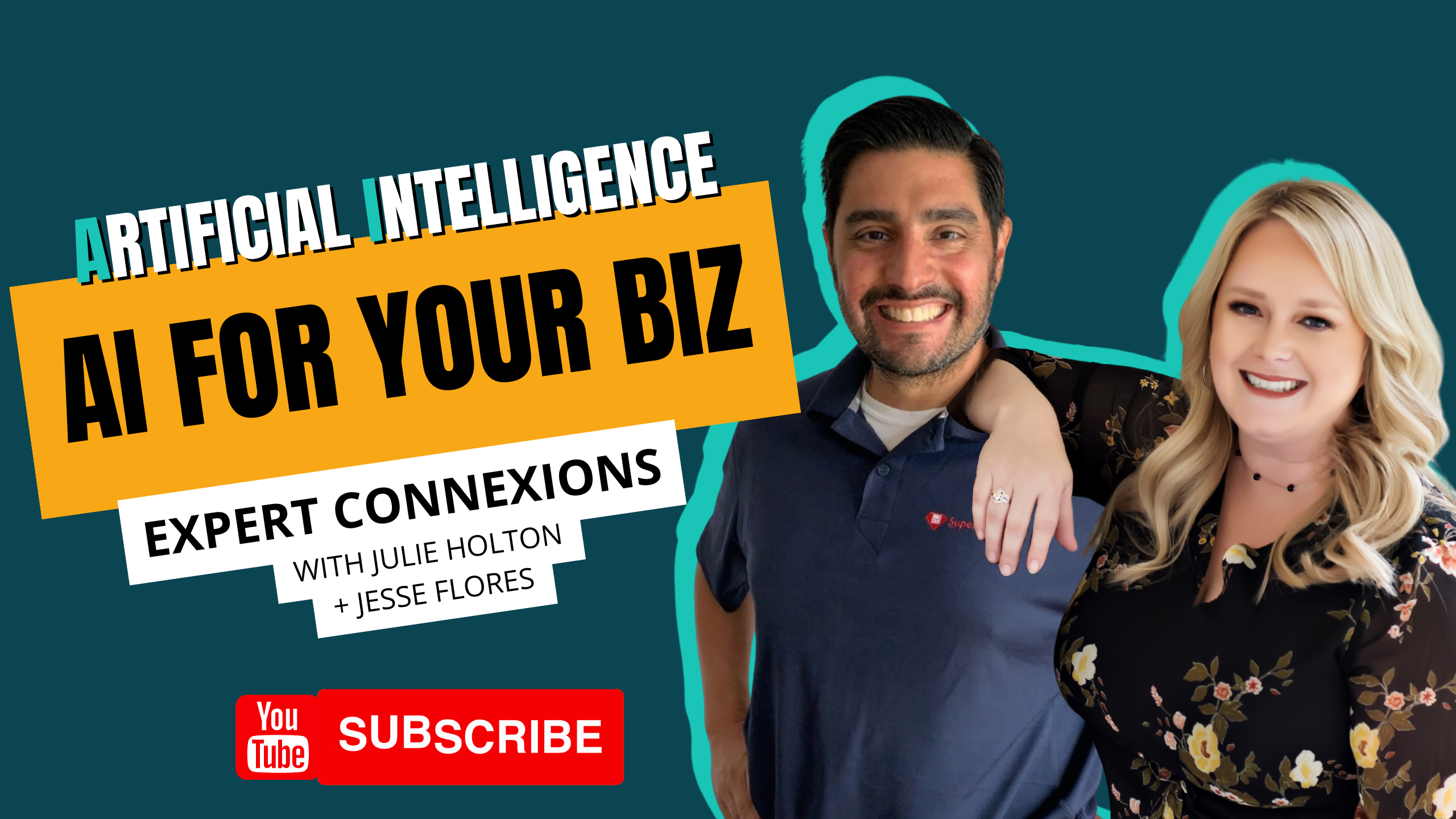Artificial intelligence is changing the game for businesses – but do you truly know what it is and how it works?
As AI continues to dominate headlines and revolutionalize the way businesses operate, many business owners find themselves overwhelmed with uncertainty. We often hear questions like should I be incorporating AI into my business? Is this worth the time and effort to research further? What are the implications?
It is crucial for companies to understand how to effectively leverage this technology to drive growth and stay ahead of the competition. From understanding the different types of AI and their applications, to ensuring the ethical and responsible use of AI, there are many factors to consider when incorporating AI into your business strategy.
In a recent episode of Expert Connexions, mConnexions founder Julie Holton sat down with Jesse Flores, Chief Web Pro at Super Web Pros, to discuss the important considerations for businesses when implementing AI.
Leveraging Existing AI Tools To Save Time & Money
Although you might think the world of AI is new and unfamiliar, the reality is that you’ve likely already incorporated artificial intelligence technology into the way you work! Everyday tools like your smartphone, devices like Alexa, Siri, or Google, photo-editing software like Canva, or even transcription tools like Otter AI, which will record conversations and provide high-level summaries and identify action items, are all common technologies that utilize artificial intelligence software in some capacity.
These workflow and communication tools are already well-established, and can be easily implemented for almost any business as a way to streamline processes and increase productivity. There is little risk involved in investigating these products for your business, and significant rewards to be had when used to their full potential.
Developing AI for a Competitive Advantage
Using existing AI tools is a great way for any business to take the first step into the world of artificial intelligence anD automation. But for those looking to take things one step further, there are incredible opportunities for people to develop a custom AI that will provide a competitive advantage for their business.
To begin, you need three things:
- A process that is repetitive
- A process that is minimally variable
- Existing data that you’ve been tracking or collecting, which can be used to train your AI
If you have those three things, that’s a good sign that there is likely a way to automate your process with an AI-based tool, giving you a competitive edge over your competition.
Wondering how this would work in the real world? Jesse shared a powerful example from one of his own clients:
“We have a client in commercial roofing down in Arkansas. They work with a large retail chain that has thousands of massive big box stores around the country, and part of the roofing company’s role is to staff people to go around to all of these stories, and they climb up on roofs to take photos. They’re taking lots and lots and lots of pictures – because you can imagine that the roof expense bill gets pretty large for multi-hundred-thousand square foot distribution centers!
These pictures are then saved in a Dropbox, and ultimately somebody has to go through and filter out these pictures and give each roof a score. This doesn’t have to be done by a person – it’s only done by a person because they don’t know a better way.
We’re working with them right now to do a computer vision AI that will essentially allow for a drone to fly over, take those pictures, and then generate the output in a richer way than a human could, because AI can process data much faster than a person looking at an image can.”
In this example, we can easily see how the three data points we shared earlier are each addressed:
- A process that is repetitive: An individual visits the box store, goes to the roof, takes photos, uploads photos, and evaluates/scores the photos
- A process that is minimally variable: All of the steps are necessary and rarely change
- Existing data that you’ve been tracking or collecting, which can be used to train your AI: Photos from previous roofs have been collected and graded for several years
With those three things, the client is able to work with a developer to build a product in their business that will allow them to compete in a way nobody else in their industry is currently able to do. Although it will cost the client in Jesse’s example a large capital cost upfront for the work to develop this tool, it will also lead back to a new and significant stream of revenue.
For even more in-depth insight on this transformational topic from Jesse and Julie, be sure to watch the full Expert Connexions episode:
At mConnexions, we’re constantly on the lookout for ways to help our clients stay on the forefront of technology for their businesses. If you have questions about AI and how, when, and where you can put it to work for your business, reach out to our team today.

